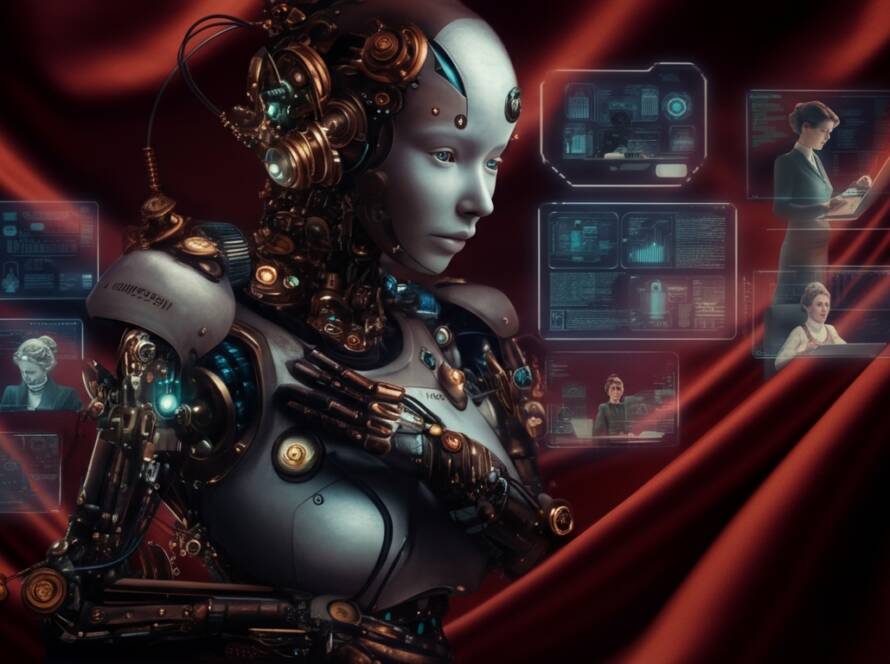Humans vs. Machines
As artificial intelligence continues to advance, the conversation around what tasks AI can handle versus those that require human intervention becomes increasingly relevant. This exploration not only highlights the strengths and limitations of both humans and machines but also invites us to consider how they can work together in innovative ways. Let’s delve into the tasks AI excels at and those that still rely on human skills.
Tasks AI Can Handle
Data Analysis: Imagine sifting through mountains of data to find valuable insights. AI can do this in a fraction of the time it takes a human. For instance, in finance, AI algorithms analyze market trends and historical data to predict stock movements, providing investors with actionable insights that can lead to better decision-making.
Automation of Repetitive Tasks: Think about the hours spent on mundane tasks like data entry or scheduling. AI can automate these processes, allowing employees to redirect their energy toward more strategic initiatives. This shift not only boosts productivity but also enhances job satisfaction as workers engage in more meaningful work.
Predictive Analytics: AI’s ability to forecast outcomes based on historical data is transforming industries. In healthcare, for example, AI can predict patient outcomes, helping doctors make informed decisions about treatment plans. In marketing, AI analyzes consumer behavior to anticipate trends, enabling businesses to tailor their strategies effectively.
Image and Speech Recognition: AI has made significant strides in recognizing images and processing natural language. Applications like facial recognition and virtual assistants (such as Siri and Alexa) rely on these capabilities, making everyday tasks more convenient and efficient for users.
Personalization: Ever wonder how streaming services know exactly what you want to watch next? AI analyzes user behavior to provide personalized recommendations, enhancing the user experience. This capability is also evident in e-commerce, where AI suggests products based on previous purchases and browsing history.
Tasks Humans Excel At
Emotional Intelligence: One of the most significant advantages humans have is the ability to understand and respond to emotions. This skill is crucial in roles that involve counseling, negotiation, and conflict resolution, where empathy and emotional understanding are key to success.
Creative Thinking: While AI can generate content based on existing data, humans excel at original thought and artistic expression. Whether it’s writing a novel, composing music, or designing a new product, human creativity remains unmatched. This creative spark is essential for innovation and pushing boundaries.
Complex Decision-Making: Situations that require nuanced judgment, ethical considerations, or an understanding of human context are best handled by humans. For instance, making decisions in healthcare often involves weighing emotional and ethical implications, something AI struggles to navigate.
Interpersonal Communication: Building relationships and understanding social cues are areas where humans excel. Engaging in meaningful conversations, whether in personal or professional settings, requires a level of nuance and understanding that AI cannot replicate.
Adaptability: Humans can quickly adapt to new situations and learn from experiences in ways that AI currently cannot. This adaptability is crucial in dynamic environments where conditions change rapidly, such as in crisis management or innovative industries.
The Balance Between Humans and Machines
The future likely lies in collaboration between humans and AI, where each complements the other’s strengths. For example, AI can handle data-heavy tasks, allowing humans to focus on strategic thinking and creativity. This partnership can lead to enhanced productivity and innovation across various fields.
Consider a scenario in a creative agency: AI can analyze market trends and consumer preferences, providing data-driven insights. Meanwhile, human designers and strategists can use this information to craft compelling campaigns that resonate with audiences. This synergy not only improves efficiency but also fosters a culture of innovation.
By understanding the strengths and limitations of both humans and machines, we can leverage AI effectively while ensuring that human skills remain valued and essential. Embracing this balance will not only enhance efficiency but also create a more innovative and empathetic approach to problem-solving in our increasingly automated world.
As we navigate this landscape, it’s essential to remain curious and open-minded about the possibilities that arise from the collaboration between humans and machines. The future is not about replacing one with the other but rather about finding harmony in their coexistence.
Disclaimer:
The information provided in this blog is for informational purposes only and should not be considered professional advice. While we strive to provide accurate and up-to-date information, we make no guarantees about the completeness or reliability of the content. Any actions you take based on the information in this blog are at your own risk. Additionally, this blog may contain affiliate links, and we may earn a commission from purchases made through those links.


